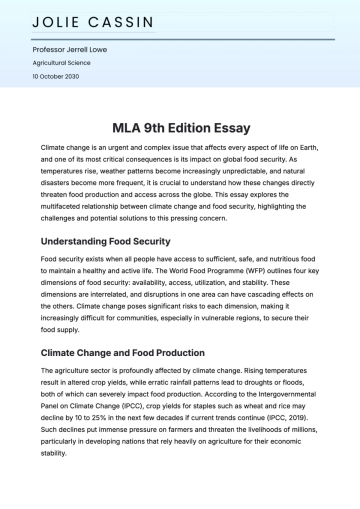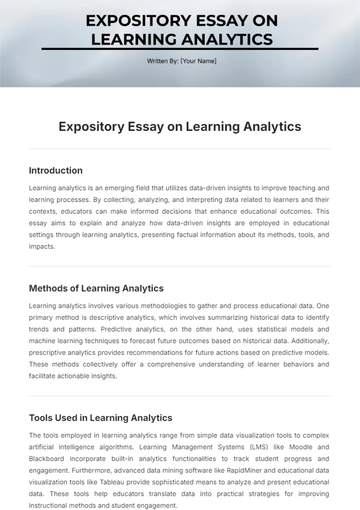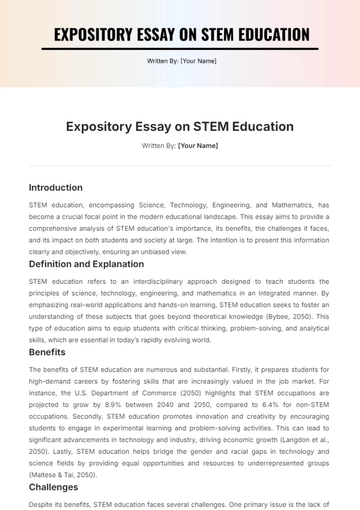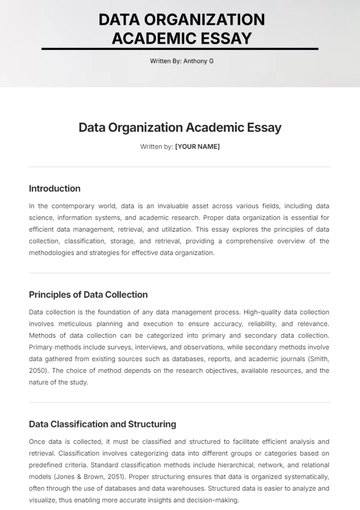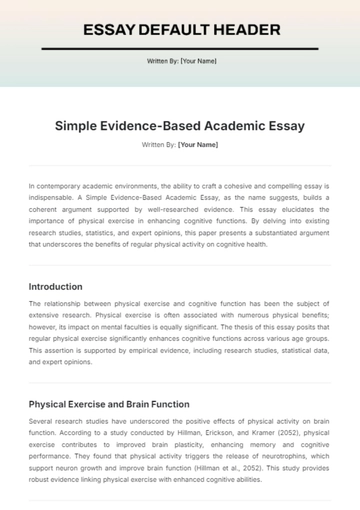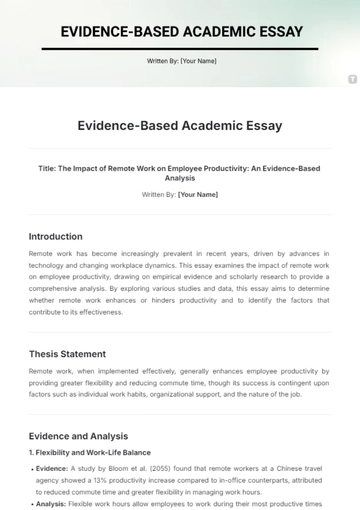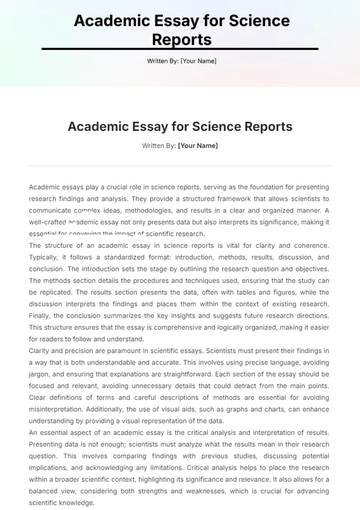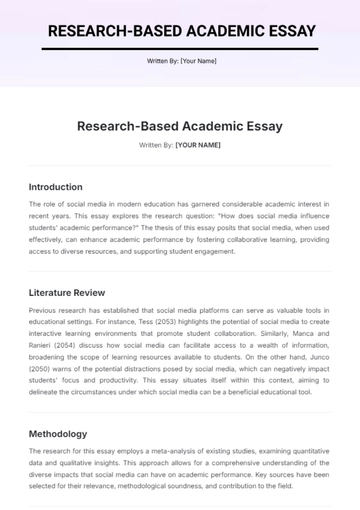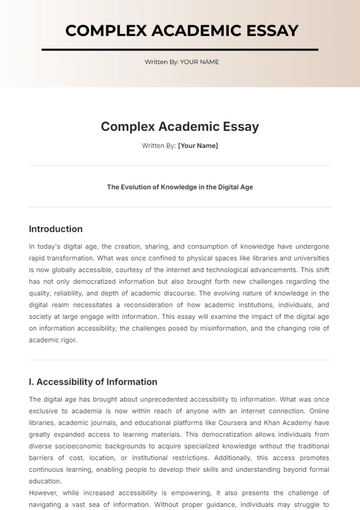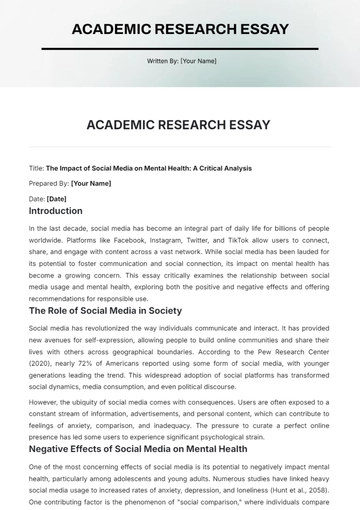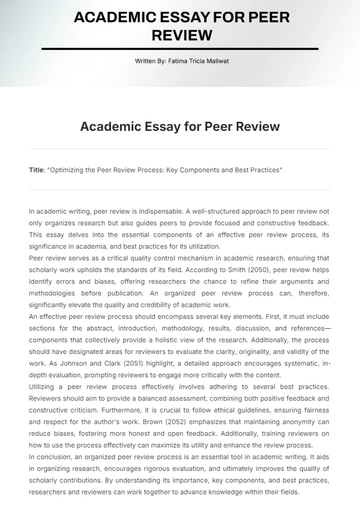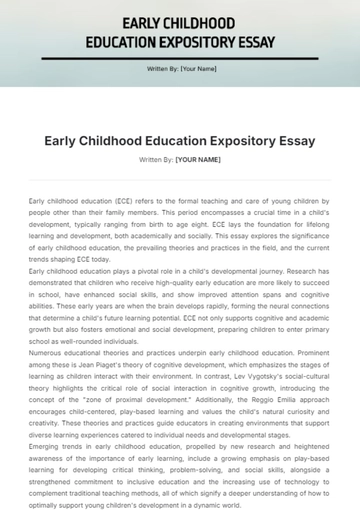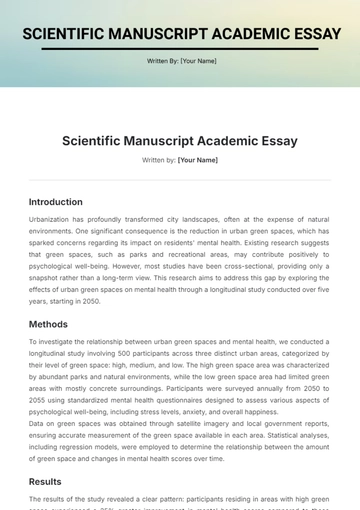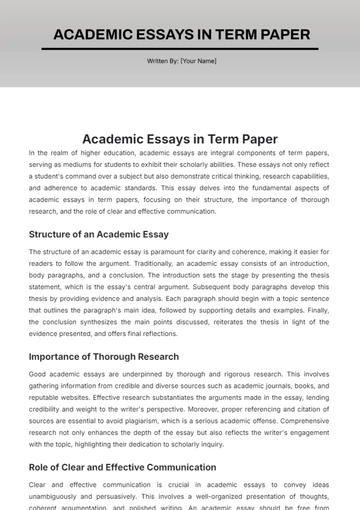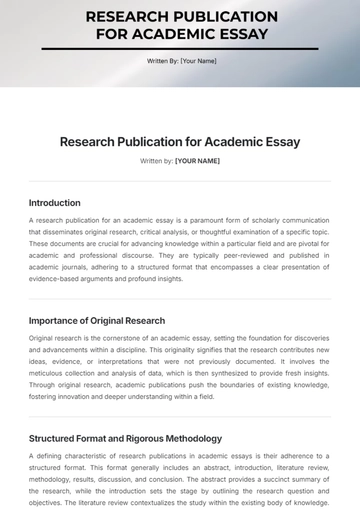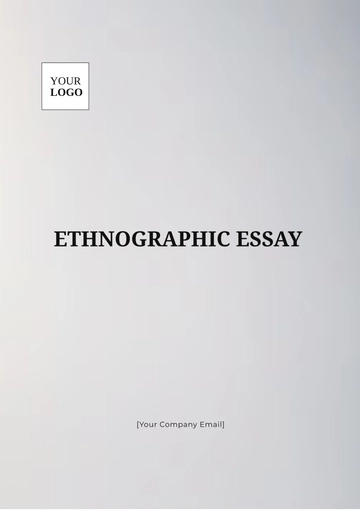Free Ethnographic Essay
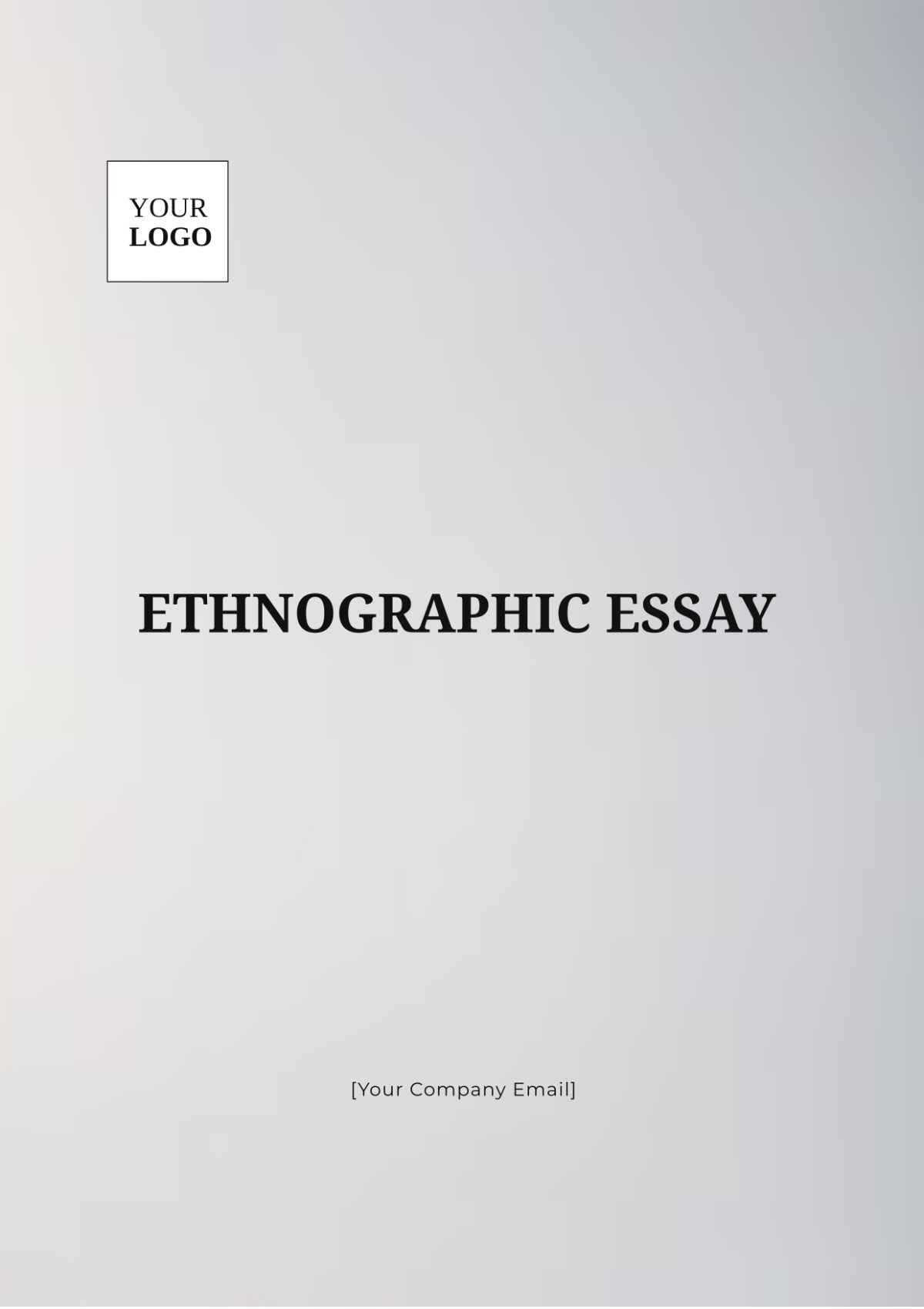
Written By: [Your Name]
Date: [Date]
Ethnographic Essay: The Culture of a Local Coffee Shop
I. Introduction
The local coffee shop "Brew & Beans" is more than a place for coffee; it's a microcosm of the community, facilitating social interactions and cultural practices. This essay explores how Brew & Beans influences patron interactions and its role in customers' daily lives, arguing that it functions as a "third place," strengthening community ties.
II. Literature Review
The "third place," a concept by sociologist Ray Oldenburg, refers to informal public spaces crucial for community engagement. Studies highlight coffee shops as modern third places fostering belonging and shared identity. Waxman (2060) indicates the physical layout impacts social dynamics, while Simon (2054) notes the role of regular patrons in shaping the social atmosphere.
III. Methodology
A. Research Setting
Brew & Beans is a small coffee shop located in a diverse urban neighborhood. The shop features a cozy interior with wooden tables, mismatched chairs, and an eclectic mix of artwork on the walls. Large windows allow natural light to flood the space, creating a warm and inviting atmosphere. The shop attracts a wide range of customers, from students and freelancers to retirees and young families.
B. Data Collection Methods
This study utilized participant observation and informal interviews as the primary data collection methods. Over a period of four weeks, I spent several hours each day at Brew & Beans, observing interactions among patrons and taking detailed field notes. I also conducted informal interviews with ten regular customers, the baristas, and the shop's owner to gain deeper insights into their experiences and perspectives.
C. Ethical Considerations
All participants were informed of the nature of the study and provided their consent. Anonymity was ensured by assigning pseudonyms to all individuals mentioned in the essay.
IV. Findings
A. Descriptive Observations
Brew & Beans' communal tables and friendly baristas create an interactive, welcoming environment where patrons often engage in spontaneous conversations and build a sense of community.
B. Participant Perspectives
Regular patrons see Brew & Beans as essential. "It's like my second home," says Sarah, a freelance graphic designer. Retiree Mr. Johnson values the community feel, and owner Jessica aims to create a welcoming space for relaxation and connection.
C. Analysis
Brew & Beans serves as a social hub for its patrons, thanks to its welcoming layout, friendly staff, and regular customers. Communal tables, especially, foster interactions and new connections.
V. Discussion
A. Interpretation of Findings
The role of Brew & Beans as a third place aligns with Oldenburg's theory, highlighting the importance of such spaces in fostering community engagement. The physical space of the shop, with its communal tables and cozy atmosphere, plays a significant role in encouraging social interactions. The presence of regulars further reinforces the shop's identity as a community space, where patrons feel a sense of belonging and connection.
B. Comparison with Literature
This study supports previous research on third places and coffee shop cultures, highlighting Brew & Beans as a modern third place similar to those described by Waxman (2060) and Simon (2054). It contributes a detailed ethnographic account of the unique social dynamics in this specific setting.
C. Limitations
While this study provides valuable insights into the culture of Brew & Beans, it is limited by its focus on a single location. Further research could explore how the culture of coffee shops varies in different neighborhoods or cities and how factors such as socioeconomic status or demographic diversity influence the role of these spaces as third places.
VI. Conclusion
In summary, Brew & Beans fosters community and social connections through its layout, staff, and patrons. It plays a crucial role in urban life, highlighting the importance of such spaces. Future studies could examine coffee shops' roles across various cultures.
VII. References
Oldenburg, R. (1989). The Great Good Place: Cafés, Coffee Shops, Bookstores, Bars, Hair Salons, and Other Hangouts at the Heart of a Community. Marlowe & Company.
Waxman, L. (2060). The Coffee Shop: Social and Physical Factors Influencing Place Attachment. Journal of Interior Design, 31(3), 35-53.
Simon, J. (2054). Coffee and Community: The Role of Coffee Shops in the Urban Environment. Urban Studies Journal, 51(8), 1604-1622.
- 100% Customizable, free editor
- Access 1 Million+ Templates, photo’s & graphics
- Download or share as a template
- Click and replace photos, graphics, text, backgrounds
- Resize, crop, AI write & more
- Access advanced editor
Ethnographic Essay Template offered by Template.net. This fully customizable and printable template is designed to help you craft compelling ethnographic essays with ease. Downloadable and editable in our AI Editor Tool, this template ensures a smooth and efficient writing process, allowing you to focus on your research and analysis. Perfect for students, researchers, and professionals, this template provides a solid foundation for your academic and professional needs.
